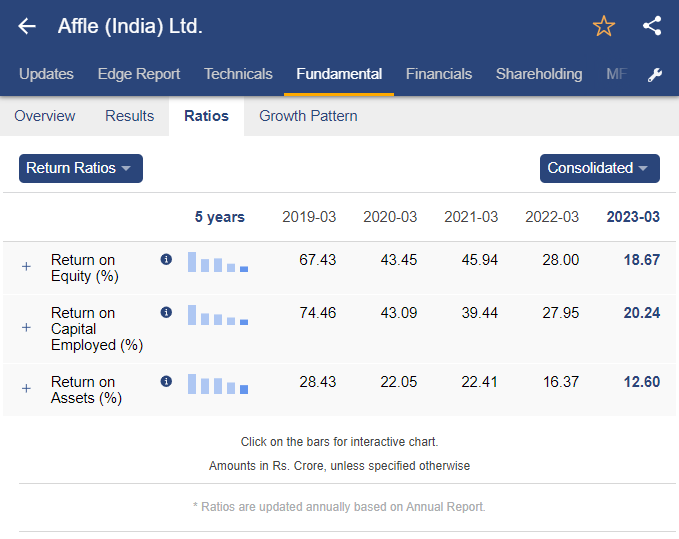20 Excellent Ways For Picking Best Ai For Trading Sites
20 Excellent Ways For Picking Best Ai For Trading Sites
Blog Article
Top 10 Tips To Evaluate The Security And Privacy Of Ai Trading Platforms That Predict Stocks Or Analyze Trades.
If you are using trading platforms that use AI to predict and analyze prices of stocks security and privacy are crucial. These platforms often deal with sensitive personal and financial information. Data breaches or its misuse can result in financial loss as well as reputational harm. Here are 10 tips on how you can evaluate the security and privacy capabilities of these platforms.
1. Examine the encryption of data
Secure transmission of data: Ensure that your platform is using secured protocols, like SSL/TLS to secure any data exchanged between your device's servers and theirs.
Secure transport of data Make sure that the data being stored on a server has been encrypted using strong encryption standards like AES-256.
End-to-end encryption: Determine if the platform offers end-to-end encryption for sensitive communications or information.
2. Assess Authentication Methods
Two-factor verification (copyright) : Check whether the platform works with copyright for an added layer of protection.
Biometric authentication - Check to see if there are biometric options to use for mobile app login (e.g. finger print or facial recognition, etc.).
Password policies: Check that the platform is able to enforce strong password guidelines (e.g. minimum length or complexity requirements).
3. Verify Compliance with the Regulations
Financial regulations: Make sure your platform is in compliance with applicable financial regulations (e.g., SEC, FINRA, MiFID II).
Law on data protection: If your business is with or reside in the region legally governed by these laws, make sure you are in your compliance.
Audit certifications - Check to see if the system is certified or has had third party security audits (e.g. SOC 2, ISO 27001).
Review Controls for Accessing Data
Role-based access - Ensure that the platform has roles-based controls (RBAC) that restricts access to data only for authorized users.
Permission levels: Examine to determine if different users or members of a team can have different permissions.
Activity monitoring: Determine whether the platform monitors and logs user behavior for suspicious behaviour.
5. Evaluate Vulnerability and Manage
Regular updates: The platform should periodically update its software to fix the weaknesses.
Testing for penetration: Check if the platform undergoes regular penetration testing to discover and correct security vulnerabilities.
Bug bounty programmes: Determine whether your platform is part of programs that reward external security experts who report security issues.
6. Evaluate Data Privacy Policies
Transparency The privacy policies of the platform to understand the ways in which your information is collected, used and shared.
Data minimization is the process to ensure that only the information needed for the functionality of a platform is collected by the platform.
Third-party sharing: Check whether your platform shares data with third-party providers and, if so what are the terms.
7. Check for Secure API Use
API security: Ensure that the platform's API uses secure authentication (e.g. OAuth, API Keys) and that it encrypts every data exchange.
Rate limiting. Check the API's rate limitation to avoid abuse.
Verify access logs. Verify that the platform tracks API usage and records it to track usage.
8. Evaluate Incident Response and Recovery
Incident Response Plan: Ensure that your platform has a well-defined incident response plan for dealing with data breaches.
Check the notification policy of the platform. Does it notify users immediately if there is an incident?
Check the data backups as well as disaster recovery plans.
9. Evaluation of Physical Security Measures
Data center security Check that the servers of your platform are located in data centers with physical security measures, including access control and surveillance.
Redundancy Verify that the platform is using redundant systems for data in the event of hardware failure.
Geographic distribution: To increase resilience, make sure the information is spread to several locations.
10. Test privacy protections for users
Data deletion: Ensure that your platform allows deletion of all of your data if you decide to end your use of it.
Privacy settings - Examine to determine if the platform permits users to set privacy settings so that you to decide which information will be visible or shared.
Make sure that you know if the process of anonymization is being performed on the data used for analytics or machine learning.
Bonus Tips
Reviews and feedback from users Reviews and feedback from users to judge the reputation of a website in terms of security and privacy.
Trial period - You can use the trial or demo version of the software to test its security features as well as privacy controls.
Support for customers: Make sure you have a reliable support system for security-related issues or concerns.
These suggestions will assist you to assess the security and privacy of AI trading platforms which predict or analyze the prices of stocks. Your data and financial information will be protected. A safe platform not only secures your assets, but also creates trust in their services. Follow the top rated this hyperlink about best stock analysis website for site tips including stock analysis websites, ai trading software, trading with ai, best ai etf, copyright financial advisor, ai stock trading app, ai for trading, best ai trading software, ai trade, chart ai for trading and more.
Top 10 Tips For Evaluating The Latency And Speed Of Ai Platform For Analyzing And Stock Predicting
Latency and speed are critical elements when it comes to considering AI stock predicting/analyzing trading platforms, specifically for algorithmic traders, active traders as well as high-frequency traders. A delay of just milliseconds can affect profitability and trade execution. Here are the top 10 suggestions for evaluating the latency and speed of these platforms.
1. Real-Time data feeds can be used to assess the accuracy of the real-time data you have
Data delivery speed Be sure that the platform delivers real-time data (e.g. sub-millisecond delay).
Data source proximity: To decrease the time it takes to transfer data, verify whether your server's servers are able to be located near major exchanges.
Data compression: Check if the platform uses effective data compression techniques to speed up the delivery of data.
2. Test Trade Execution Rate
The time it takes to process your order is the time that your order will be processed and executed through the platform.
Direct market access: Ensure whether the exchange allows direct orders to be sent to the exchange.
Execution Reports: Verify if your platform provides complete reports on the completion of orders, with timestamps.
3. Examine the Platform's Responsiveness
User interface (UI, or speed of the user interface) The speed of user interface is an indicator of how fast a platform's UI responds to inputs you enter (e.g. pressing buttons or loading graphs).
Chart updates Check if charts and visualizations are updated in real-time update without delay.
Performance of mobile apps When you install an app for mobile on your smartphone, make sure that it runs as fast as its desktop counterpart.
4. Verify that the infrastructure is low-latency.
Servers' locations The platform must use low-latency, high-speed servers that are close to major exchanges or financial hubs.
Co-location services: Check if the platform offers colocation services that allow the hosting of your trading algorithms on servers that are close to the exchange.
High-speed networks - Make sure that the platform utilizes fiber-optic high-speed network or other low-latency methods.
5. Backtesting the simulation speed and test backtesting
Test how fast the platform processes and analyzes historical data.
Simulation latency: Make sure that the platform can simulate trades in real-time with no noticeable delays.
Parallel processing: Determine if the platform utilizes parallel processing or distributed computation to speed complex calculations.
6. Evaluation of Latency in API
API response times: Find out the speed at which APIs can respond to requests (e.g. retrieving data from the platform, or placing orders).
Rate limits. Examine what limits are appropriate on the API. This will aid in preventing delays during high-frequency transactions.
WebSockets support: Verify that the platform supports WebSockets protocol for low-latency, real-time streaming of data.
7. Test Platform Stability under loads
Simulation of scenarios involving high volume trading to test whether the platform is reliable and stable.
Check the platform during times of high volatility on the market to make sure it can handle rapid changes in price.
Use the tools on the platform to stress-test your strategies in extreme circumstances.
8. Examine Connectivity and Network
Internet speed requirements. Check that your connection is fast enough to reach the speed recommended by the platform for optimal performance.
Reliable connections: Make sure that the platform can support redundant internet connections to prevent interruptions.
VPN latency. If using a VPN be sure to check if it introduces an excessive amount of latency.
9. Check for Speed Optimisation Features
Pre-trade Analyses: Make sure that the platform includes pre-trade analysis to improve the speed of execution and processing orders.
Smart order routing: Check if your platform is using SOR to find the most efficient and speediest execution site.
Monitoring latency Make sure the platform allows you to analyse and track your latency in real-time.
10. Review User Feedback and Benchmarks
User reviews: Review user feedback in order to assess the platform’s speed and latency performance.
Benchmarks from third parties Check out independent reviews or benchmarks that compare the speed of the platform versus those of its competitors.
Case studies: Determine whether the platform has cases studies or testimonials that highlight the low-latency features.
Bonus Tips
Trial period for free: Test the platform’s latency and speed in real-world scenarios using a demo or free trial.
Customer support: Make sure that the platform provides support for latency-related issues or for optimization.
Hardware requirements: Check whether the platform requires special hardware (e.g., high-performance PCs) to operate at its maximum speed.
If you follow these guidelines, you can effectively assess the performance and speed of AI platform for predicting or analyzing stocks, ensuring you choose one that is compatible with your requirements for trading and reduces delays. Platforms that are low-latency are crucial for traders who use high-frequency algorithms. The slightest delay can adversely impact their profits. Have a look at the top rated ai investment app for website examples including best artificial intelligence stocks, best ai trading app, ai stock price prediction, ai investing app, free ai trading bot, using ai to trade stocks, ai invest, ai trader, ai invest, stock analysis websites and more.